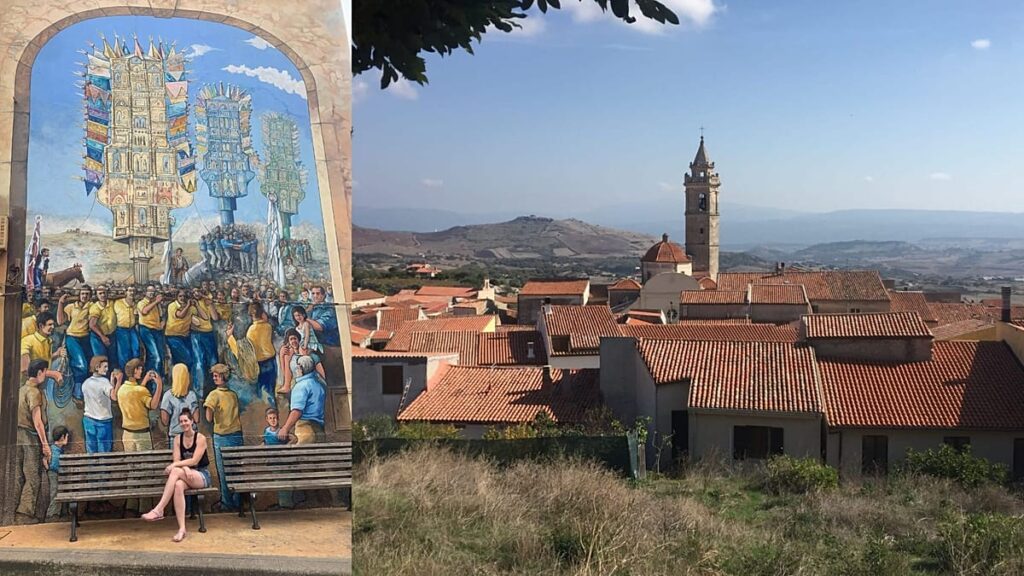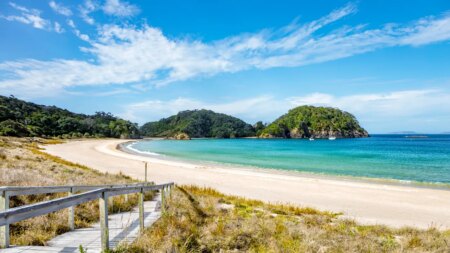In March 2024, Bianca Fontana got on a plane from Australia to spend three weeks in Sardinia. During the trip, she did some radical life reconsideration.
Fontana bought a house, completed a chunk of paperwork, and laid the foundation for her relocation halfway across the world to the Italian island.
Sardinia’s hinterland, like many rural areas of Italy, is suffering a severe demographic decline.
In the last few years, its remote communities have launched various schemes in the hope of bolstering their dwindling populations and sagging economies.
Here’s how one foreigner started a new life in a village of 2,500 inhabitants, and the projects that are still open for those tempted to follow in her footsteps.
I moved to a Sardinian village of 2,500 residents
Fontana, who has Italian ancestry, makes the process of purchasing a house on the other side of the globe sound like a breeze.
“Honestly, the biggest challenge was just saying yes, making the decision itself – because it can be a scary one,” she says.
“I had not foreseen home ownership in my life, and I’ve lived a life abroad and full of travel, never staying longer than five years in one place, so the thought of committing to something was the scariest part.”
The business of actually buying the house was comparatively straightforward, she says. During her three-week stay in Sardinia, she chose the property and signed over power of attorney to the surveyor.
A few weeks after returning to Australia, the documents were completed, and Fontana sealed the deal with a bank transfer.
When she next came back to the island, her lawyer was waiting with the keys.
Sardinia puts empty houses on the market for €1
Sardinia’s rural towns and villages are moribund. Most of the island’s 1.57 million inhabitants – down from 1.64 million three decades ago – live in its coastal cities like Cagliari, Sassari and Alghero.
In the countryside, scores of houses stand empty.
With younger residents leaving in their droves for urban centres, rural communities have been taking a different tack to repopulate their abandoned properties.
Municipalities like Ollolai and Nulvi have sought to tempt Italians from the mainland and foreigners with offers of houses as cheap as an espresso.
Sardinian authorities have since launched island-wide anti-depopulation measures that grant individuals moving to a village of fewer than 3,000 residents up to €15,000 to purchase or renovate a home, provided they remain resident there for at least five years.
It’s not an insignificant sum, considering there are myriad cheap-as-chips houses that aren’t even part of selling-off schemes.
Fontana purchased her house for €30,000. She notes there was a fair amount of renovation work to make it habitable, including repairing the roof and an interior wall that was heavily water-damaged.
She was able to take advantage of the renovation incentive scheme. Completing the complicated paperwork can be daunting for a foreigner, but Fontana left her surveyor to handle it.
“The approval came in maybe six months [after submitting it] and then I was notified that the money was ready around six months after that, so it took a little over a year to receive the money,” she says.
Fontana’s future restyling plans involve revealing the stone walls on the ground floor, adding a couple of extra bathrooms, fitting a much-needed kitchen and installing a heating system.
Still, her rough estimate of €100,000 for the works is considerably more affordable than anything equivalent she says she could have found back home in Australia.
Sardinia offers incentives for having children
The anti-depopulation package is not just about reviving houses, but also boosting populations long-term and shoring up economies.
Sardinia’s birthrate is at rock bottom. It has the lowest figure in Italy (already one of the lowest in the EU) at 0.91 children per woman.
Just to keep a population stable, the average needs to sit around 2.1 children per woman.
As such, part of the regional incentive package includes a monthly subsidy of €600 for a first child plus €400 for each subsequent child until they turn five.
As for the economy, individuals can receive up to €20,000 to start a business in a town of fewer than 3,000 inhabitants that generates local employment opportunities.
Will foreign residents bring rural Sardinia back from the brink?
But perhaps there is something less tangible that is a powerful lure for newcomers to the island.
Those who live in fast-paced, frenetic societies in countries around the globe might look at rural Sardinia and see a haven of slow-living, close-knit communities and immersion in nature.
The rise of remote working and digital nomads visas is making moving abroad a particularly viable option now.
“I think the state of richer countries is no longer appealing to many,” says Fontana.
“People want to escape the rat race, find a quieter, more nature-filled way of life, so people search online for solutions, and they find YouTube channels like mine and slowly, slowly, find the courage to move.”
She adds that while she has no plans to have children, sharing her journey online with others and giving advice to those interested in making a similar move, “can be just as effective to bring new blood to this place”.
Read the full article here







